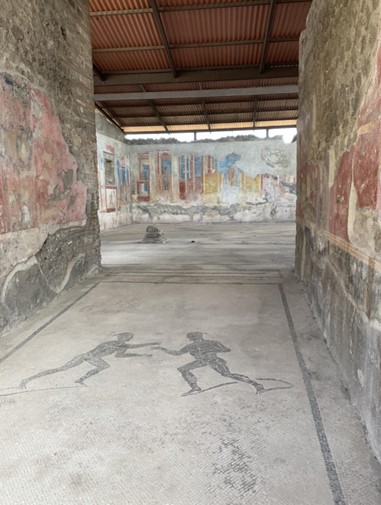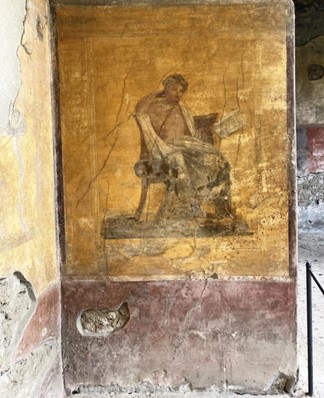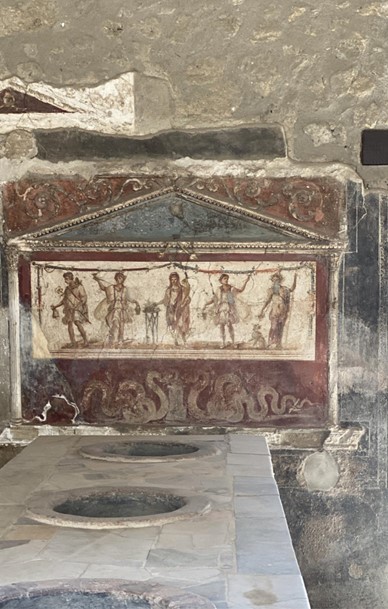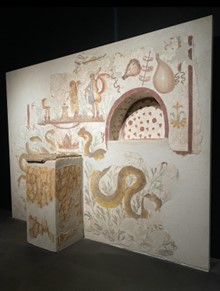
ROME – The summer of 2023 has been a wonderful one for archaeology, and in turn an exciting time for pagans the world over. In Turkey, at the site of the ancient Greek city of Aizanoi, statues of Aphrodite and Dionysus were uncovered, pointing to extended worship of these gods well into the Christian period.
In Malta, a Roman Domus was unearthed, the first discovery of its kind on the island in over 150 years. And this summer has also seen the largest excavation of Pompeii in a generation. Even more mind-boggling: the current site of the excavation hasn’t been touched since the mid-1800s. The technology and resources now available are staggering compared to the last time this section of the ancient city was investigated.
When the team began in July 2023, the only thing they knew about the site was that a laundry had been discovered there two hundred years ago. But in the first two weeks of the dig alone, the team uncovered findings that shocked them, including a still-life painting, mosaics, and frescoes, one of which appears to show a pizza. They even found a commercial oven not unlike those still in use across the Mediterranean today. What is causing the biggest buzz for pagans, however, is the finding of a hearth shrine showing an unmistakable snake carving and a rare depiction of a goddess.
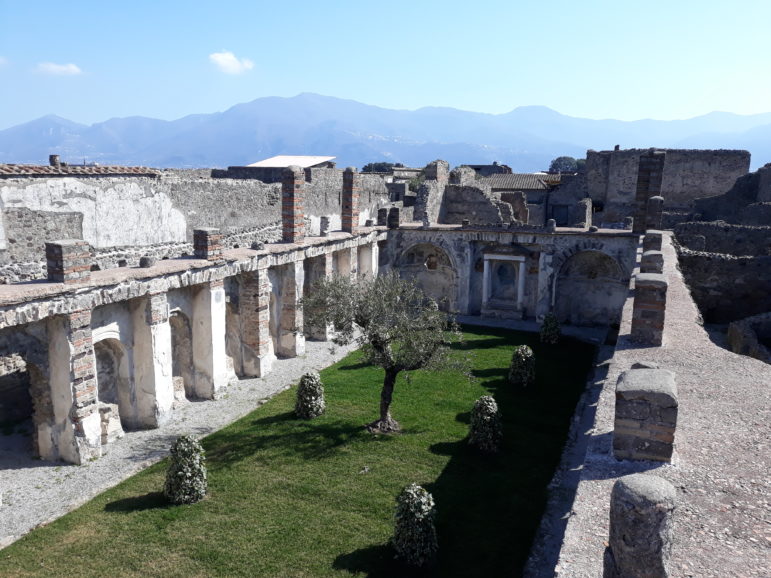
By Simon Burchell – CC BY-SA 4.0, https://commons.wikimedia.org/w/index.php?curid=77359406
The snake is a known symbol of fertility and abundance. They were sacred to the ancient Greeks and Romans, found in statuary and on frescoes from Crete to Athens. They are found often on Roman lararia, or home altars, as symbols of the Lares. The Lares are ‘father-gods’, or ancestors revered for their heroic deeds that brought honor to the family. They also were the spirits that protected the boundaries of the house, and the wellbeing of the family members. They were honored at the hearth along with the Penates, or spirits of the home, and the goddess of the hearth, Vesta.
Interestingly, one of the only instances in the ancient world showing Vesta in human form is found at Pompeii in a fresco in a bakery. And the hearth shrine found in this newly-discovered home shows a woman standing next to a blazing brazier. If the humanoid figure on this newly-discovered hearth shrine is Vesta, it may perhaps explore more of Vesta’s worship customs than previously understood; at the least, it may suggest a unique understanding of the goddess for the people of Pompeii. It is eerie to consider her as a fire goddess honored in such a familiar way in a place ultimately destroyed by fire.

Pompeii snake drawing [Photo Credit Elyse Welles]
Beneath the hearth shrine is a stone box, broken and unidentified at this time. Some lararia found in other archaeological sites (including at Pompeii) are concave, boxlike structures; this could be the origin of this broken artifact. But a more compelling suggestion is that the box may have contained the death masks of ancestors. Death masks were usually made of wax, and would not have survived the blasts from Vesuvius. The equivalent of having photos of your loved ones on an ancestor altar today, they were sometimes hung in atriums (entrance halls) in larger homes, too.
The sobering final moments of the family who presumably left offerings at this hearth shrine were also recorded in the ash and rubble. The dig has uncovered three skeletons: two women and a child of undetermined age and sex. The people were hiding under a staircase and were ultimately crushed by the explosion breaking the roof. Across the room from their bodies was their bed, a charred mass of ash and wood, barely recognizable. Archaeologists believe the fire began early on in the eruption, potentially from a lamp knocked over in their panic.
Archaeology has a unique way of painting a picture of the ordinary lives of people. It makes history tangible, relatable, and in the case of a violent site like Pompeii, visceral. And yet the destruction that brought an end to the city also preserved it. Nearly 2000 years later, we can learn and understand the daily life of a civilization and society long past. And for modern pagans looking to connect our practices to those of our ancestors, Pompeii is a goldmine of wonder and knowledge.
Even though the excavation is ongoing, everyone involved knows that there’s still so much more they won’t uncover. “Much of [this] will be for future generations,” says Alessandro Russo, the current dig’s co-leading archaeologist. This may leave modern Pagans wondering how much more we might yet learn about our own practices and their historical precedents. There will be more detail in the research to come.
The Wild Hunt is not responsible for links to external content.
To join a conversation on this post:
Visit our The Wild Hunt subreddit! Point your favorite browser to https://www.reddit.com/r/The_Wild_Hunt_News/, then click “JOIN”. Make sure to click the bell, too, to be notified of new articles posted to our subreddit.
